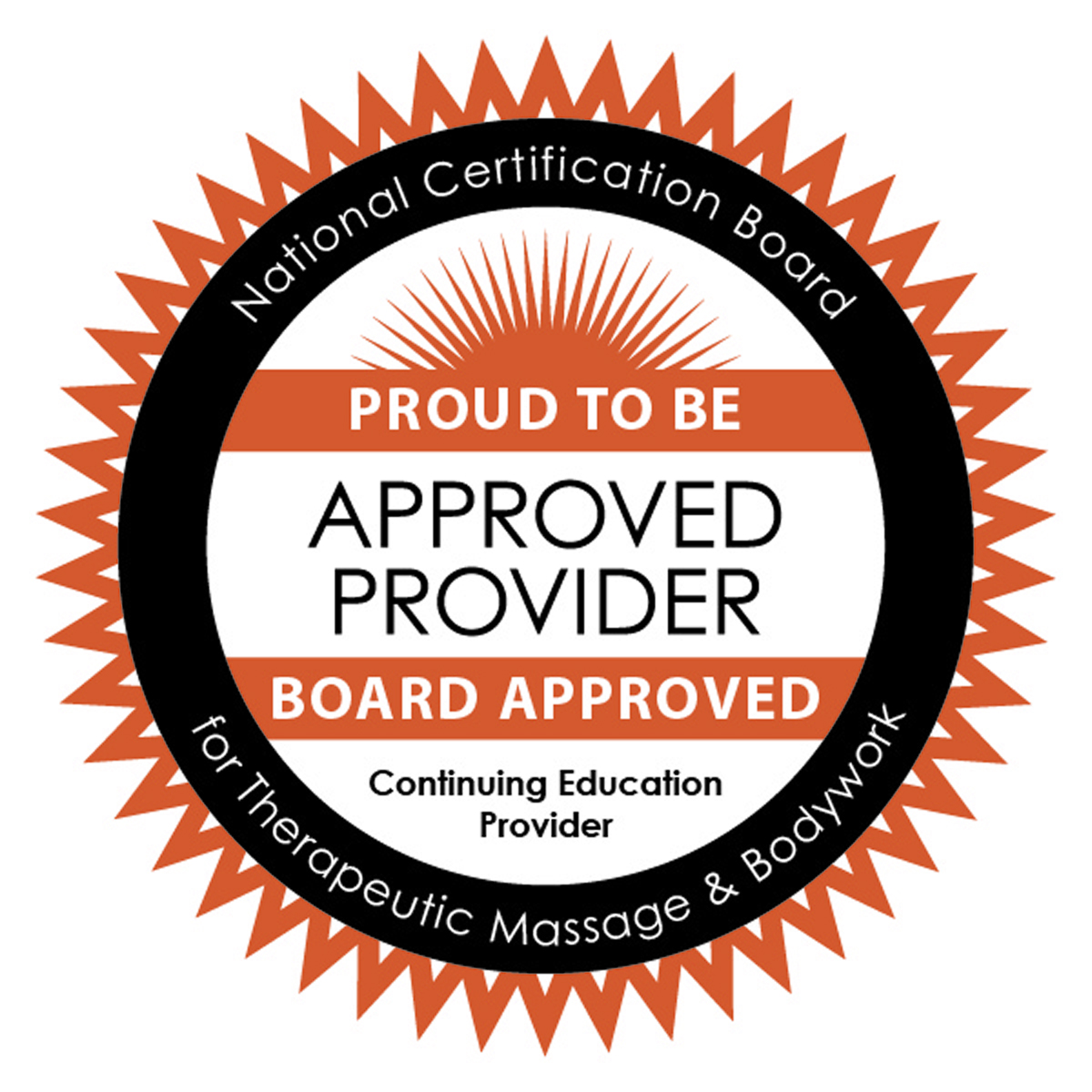An Overview of Ortho-Bionomy®
Based on osteopathic principles, the focus of Ortho-Bionomy® sessions are to facilitate the body’s natural self-healing and self-regulating responses. The Practitioner works with the body from a listening perspective. To elicit these responses, the Practitioner takes care to support the comfort and ease of movement within the client by gently exaggerating the structural, fluid, soft tissue, and/or energetic imbalances to stimulate the body’s self-regulating mechanisms. This work is very safe, even for those people who are highly sensitive or have limitations due to age, illness, or pain.
Ortho-Bionomy sessions are fully clothed and the practitioner usually works with the client on a bodywork table, and occasionally with the client seated or standing. After an intake interview both the practitioner and client work together to assess and support the self-correcting patterns related specifically to the issues or conditions that the client is experiencing.
The techniques used range from the physical and structural, to the purely energetic. This allows the practitioner to employ techniques which are appropriate for each client and each condition. Some of these techniques include:
Positional release
Range-of-motion exploration
Isometric and isotonic techniques
Gentle rocking
Static holding
Subtle or minute movements
Postural re-education and self-care exercises
Work in the energy field of the body
Work with the cranium
Work with the viscera
Neurolymphatic communication
Neuroendocrine communication
At no time does the practitioner use any movements or contact that cause discomfort for the client. At the end of the session the practitioner may identify self care exercises for the client to do after and between sessions to continue the releases and to retrain the body in its new patterns. Clients are encouraged to receive two to four sessions initially after which an on-going program of self care and/or additional individual sessions can be developed.
A Brief History of Ortho-Bionomy:
Rooted in osteopathy, Ortho-Bionomy was developed in the 1970s by Arthur Lincoln Pauls, D.O. Dr. Pauls sought a natural, consistent, and lasting way to ease his patients’ pain. Inspired by the body’s ability for self-correction, he combined the concepts of holding slack and comfort on a joint with elements of compression. Through continued research, Dr. Pauls expanded the work to include release and balance in the body through movement and energy; he also incorporated work with the organs, fluids, and other systems of the body. Dr. Pauls eventually named the work Ortho-Bionomy, meaning “correct life study.”
“Change can only come about when the self corrective instincts of the body are summoned in such a way that the body does not resist change. Anything beyond this is force, which when applied too much, leads only to the rebellion of the self instead of a re-unification of the harmonic whole.”
What happens during an Ortho-Bionomy session?
A principle of Ortho-Bionomy is 'away from pain, towards ease and comfort', so a strong focus is placed on the client’s comfort. Usually the practitioner works with the client fully clothed on a massage table, but may also work with the client seated or standing. The practitioner will often use gentle contact, movement, compression and positioning of structure and/or soft tissue for the resolution of injury, pain, or imbalance. At no time is force or aggressive techniques utilized. The practitioner and client work together to monitor the releasing of tension patterns.
An Ortho-Bionomy practitioner may incorporate some or all of the following techniques into a session: positional release, range-of-motion exploration, isometric and isotonic techniques, posture exercises, gentle rocking, subtle movements, visceral or lymphatic work, cranial work, and self-care exercises.
How long is a typical session?
A typical session lasts approximately one hour. At the end of the session, the practitioner may identify self-care exercises for the client to do after and between sessions to continue the releases and to help remind the body of its new patterns. Occasionally when working with children or babies, the sessions are thirty minutes or less.
How many sessions will it take to feel a difference?
Initially, two to four sessions are encouraged in order to assess how the body is understanding and assimilating the work. After these introductory sessions, you and your practitioner will decide if self-care exercises or other therapies might be necessary. From here, other individual sessions can be developed if required.
The number of sessions varies depending on how long a condition has been present, the seriousness or intensity of the symptoms, other related issues, and the timing of how each person’s body responds. Session frequency and quantity differs greatly with each client. It is helpful to consult with your practitioner after the initial session to determine what course of sessions will be appropriate for you.
**A note about Jessica’s current practice:
Currently, the majority of Jessica’s practice is specializing in working with clients around specific issues and the resolution of those issues instead of maintenance sessions. There should be some level of improvement of symptoms within 3 sessions, and if not, she works to refer to other practitioners or professionals who might be a better fit.
How often should I have a session?
One session every 7-14 days is usually sufficient. This allows the body enough time to integrate the neurological and physiological information from the session. During the initial stages of recovery, however, a large amount of change can occur and it is possible that additional sessions may help to integrate those changes more efficiently. Many people schedule Ortho-Bionomy every 4-8 weeks as part of their preventative health care regimen.
What conditions can Ortho-Bionomy assist with?
Ortho-Bionomy does not use force or ‘fix’. The gentle nature of Ortho-Bionomy is very helpful for many different types of problems and conditions. Among the conditions that Ortho-Bionomy may assist in supporting are:
Injuries: joint restrictions and dysfunction, muscle pain or injury, whiplash, repetitive strain injuries.
Chronic pain and conditions: chronic neck and back pain, frozen shoulder, migraines, ongoing pain not alleviated or addressed by conventional treatments.
Structural imbalances: joint discomfort, post surgery rehabilitation, scoliosis and kyphosis (curvatures of the spine), leg length discrepancies.
Stress-related symptoms: general aches, pain or fatigue, disrupted sleep patterns, physical conditions associated with emotional imbalances such as depression, boundary issues or trauma.
Nervous system regulation and/or communication issues.
Are there any conditions that cannot be assisted with Ortho-Bionomy?
Ortho-Bionomy does not set out to replace modern medicine. It honors the body’s innate wisdom, working with the body and not against it. Ortho-Bionomy is not used in place of urgent medical care that might be required for any conditions such as broken bones, life threatening injuries or serious neurological traumas. However, it may be used to complement such treatment.
I’m currently receiving medical treatment and/or using other modalities of treatment. Will Ortho-Bionomy interfere with those types of treatments?
Ortho-Bionomy is a wonderful complement to other modalities and standard medical treatment. However, in order to know what your body is responding to best, sometimes it is important to be mindful of how many types of treatments the body can assimilate at one time.
I don’t have any injuries or long-term problems. Can Ortho-Bionomy still be helpful for me?
Absolutely! Ortho-Bionomy can be a great enhancement to any preventative health program. It’s main focus is to support the body’s ability to communicate with ease and encourage its ability to respond.
I’d like to begin training in Ortho-Bionomy, but I have never had formal bodywork training. Can I still enroll in classes?
The beauty of Ortho-Bionomy is its ability to provide each student with tangible tools and awareness to implement and share the work with anyone, whether the intention is to create a full practice or simply to provide your family and friends with helpful hands on support.
We consistently teach classes to students with wide ranges of experience. Ortho-Bionomy meets us where we are and provides learning opportunities for each specific moment.


















